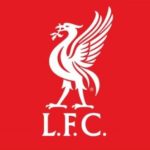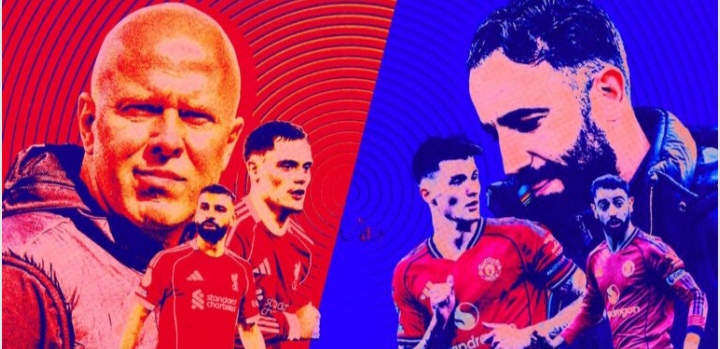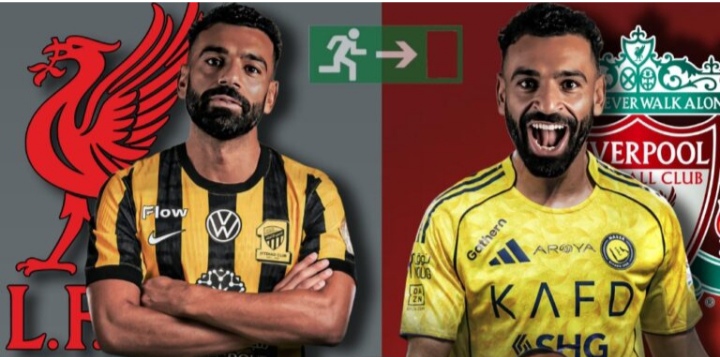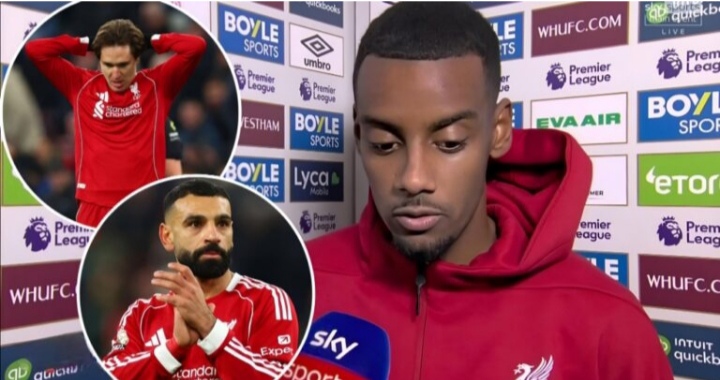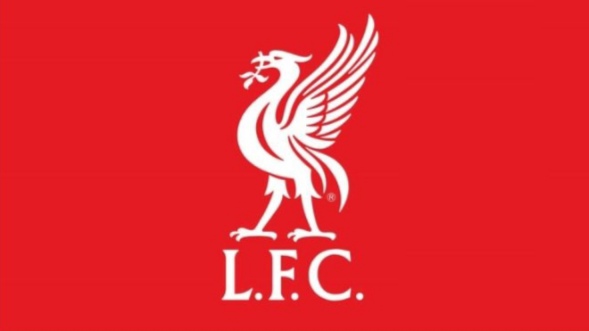The noise in the North-West of England has been rising by the hour. When Liverpool meet Manchester United, it’s never just another football match — it’s war disguised in club colors. Every chant, tackle, and glare carries decades of rivalry. Yet this time, the debate before kickoff isn’t only about who will win, but who deserves a place in a combined XI — a single lineup to reveal where both giants truly stand.
That question has fueled arguments from pubs to pundit studios: who makes the joint Liverpool–Manchester United team? Many thought it would be an easy call. Liverpool, thriving under Arne Slot, looked far ahead of United, who remain inconsistent under Erik ten Hag. But football loves its surprises, and the final selections left fans stunned.
On Merseyside, excitement filled the air as supporters argued outside Anfield. “No United player would make our team!” one yelled near the Shankly Gates. In Manchester, pride fought back. “They think they’re perfect — but we still have class,” came the reply on local radio. Everyone believed their side deserved supremacy.
Then came the announcement — and disbelief spread. United had claimed more spots than expected. Even in a tough spell, the Red Devils’ name still carried weight.
In goal, Alisson Becker’s selection was uncontested. Calm, commanding, and almost faultless, he remains Liverpool’s safety net. Andre Onana may be improving, but Alisson is still a master of his craft.
The defense sparked arguments. At right-back, Diogo Dalot edged out Trent Alexander-Arnold — a tactical choice for his defensive balance. Many called it an injustice. “Trent is the pulse of Liverpool,” one journalist protested. Yet Dalot’s steady performances and maturity earned him the nod.
At centre-back, Virgil van Dijk was an automatic pick — serene and authoritative as ever. Alongside him stood a surprise: Lisandro Martinez. After months out injured, the Argentine’s grit and composure secured his place, earning mutual respect from both fanbases. Andy Robertson, tireless and relentless, took the left-back spot with little dispute.
The midfield caused the fiercest clashes. Liverpool fans backed Alexis Mac Allister and Dominik Szoboszlai; United supporters demanded Bruno Fernandes and Casemiro. After long debate, the trio chosen was Casemiro, Mac Allister, and Fernandes — blending experience, control, and creativity. It was a midfield built on steel and style.
When the forwards were revealed, the internet erupted. Mohamed Salah, of course, kept his crown. With 19 goal involvements against United, he remains Liverpool’s tormentor-in-chief. Alongside him came Cody Gakpo, whose sharp movement and finishing have often punished United.
But the real shock came up front — Rasmus Højlund was chosen ahead of Darwin Núñez. Outrage followed. “Núñez is pure chaos — how can you leave him out?” cried one fan online. Yet others saw logic in the Dane’s sharp movement and composure. Højlund’s inclusion symbolized hope — a young striker ready to lead United’s next chapter.
The final team: Alisson; Dalot, Van Dijk, Martinez, Robertson; Casemiro, Mac Allister, Fernandes; Salah, Højlund, Gakpo. Six from Liverpool, five from United — the narrowest of margins between two historic powers.
Talk shows exploded. Jamie Carragher laughed, calling it “a charity pick for United.” Gary Neville grinned: “We’ll see who’s smiling on Sunday.” But behind all the noise was a simple truth — both clubs still mattered deeply.
For Liverpool, the lineup proved how strong their rebuild had become under Slot. The post-Klopp era looked bright, led by Salah and driven by youth and hunger.
For United, inclusion in the XI offered redemption. Despite injuries and criticism, players like Martinez, Dalot, Casemiro, Fernandes, and Højlund showed that pride and talent still burned at Old Trafford.
As matchday neared, both camps buzzed with focus. Slot told his men, “Ignore the talk — play with courage.” Ten Hag’s message was sharper: “They think they own this rivalry. Prove them wrong.”
When the game finally arrived, Anfield pulsed with energy. Flares painted the sky red; fans recited the combined XI like a prayer. As the teams emerged, Salah looked calm, Højlund fierce. The whistle blew — and history came alive again.
It was fierce, frantic, unforgettable. Salah dazzled, Robertson surged, Casemiro crunched tackles, Fernandes demanded the ball. In the 53rd minute, Salah struck — a curling finish past Onana that sent the stadium into chaos. It was his 20th goal involvement against United — joining the legends of Premier League lore.
But United fought back. In the 78th minute, Højlund rose between Van Dijk and Martinez to head home an equalizer — his moment of arrival. The match ended 1–1, but both sides claimed a moral victory: Liverpool’s king had shone again, and United’s young striker had announced himself.
Headlines the next morning said it all:
“Salah Joins the Legends.”
“Højlund Has Arrived.”
Even the pundits softened. Respect had replaced bitterness. Rivalry had turned into reverence.
Salah later said simply, “Records are nice, but winning for Liverpool means more.” Ten Hag, proud of his forward, added, “This is how new stories begin.”
In truth, that was the meaning of the combined XI — a bridge between past and future. Salah, the seasoned king; Højlund, the rising prince. Van Dijk and Martinez, Casemiro and Mac Allister — warriors from two sides of the same coin. Together, they reminded the world why this rivalry endures.
When the fans drifted away into the cool night, debates still raged, but smiles lingered. Because Liverpool versus Manchester United isn’t just football — it’s the living heart of English sport: passionate, unpredictable, eternal.


